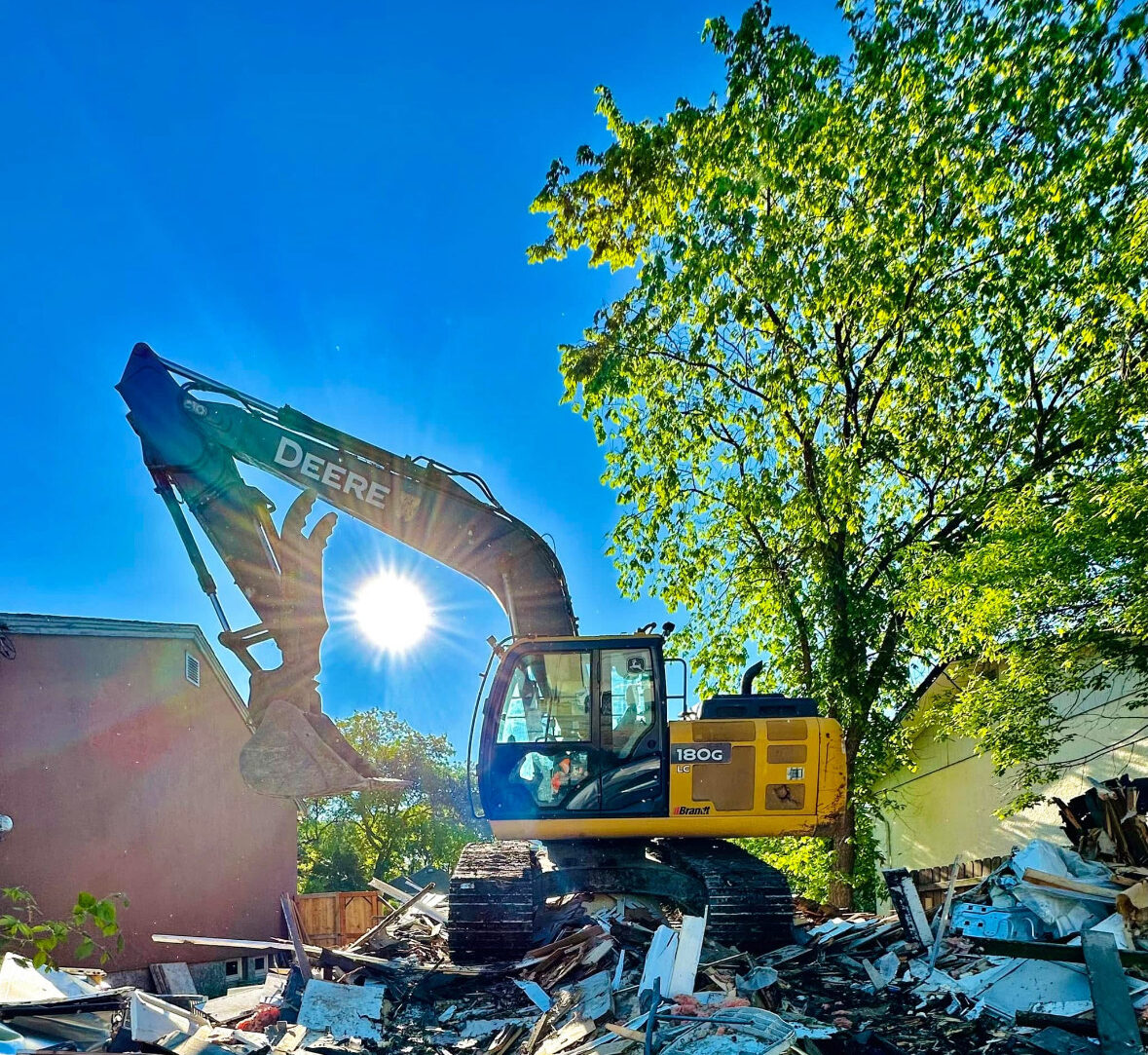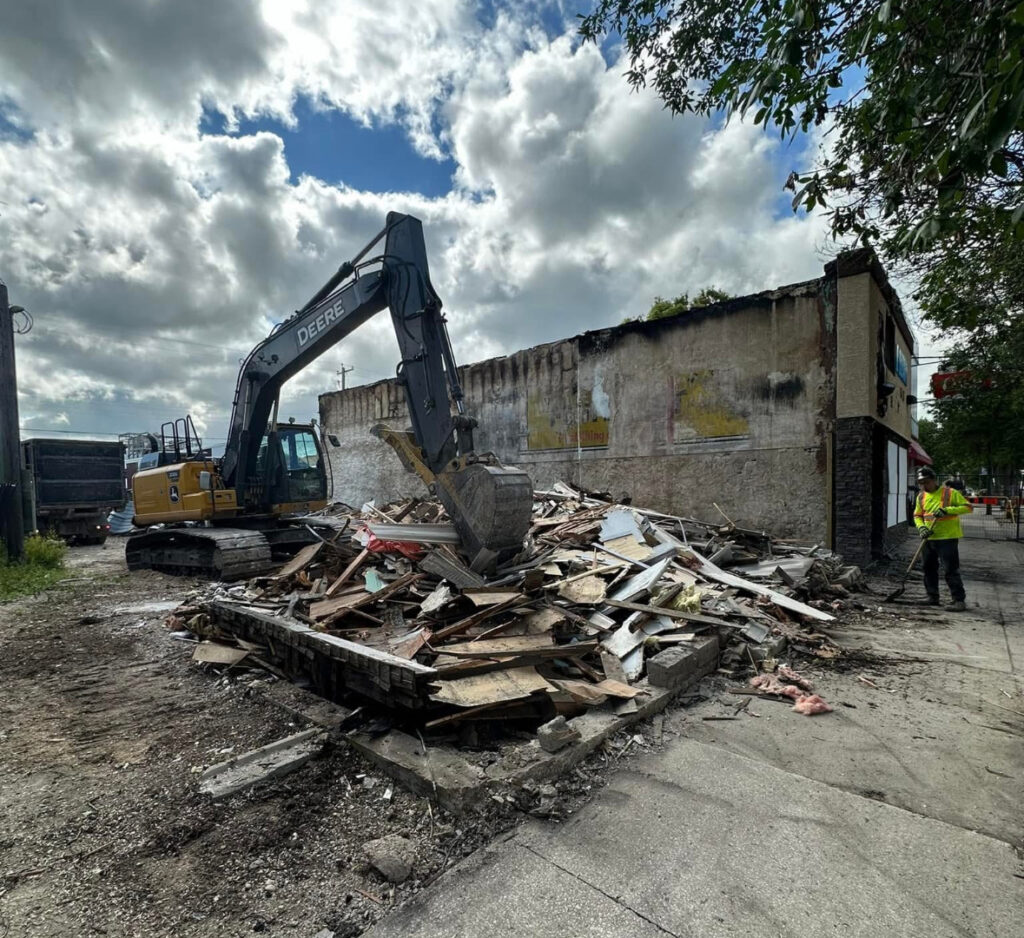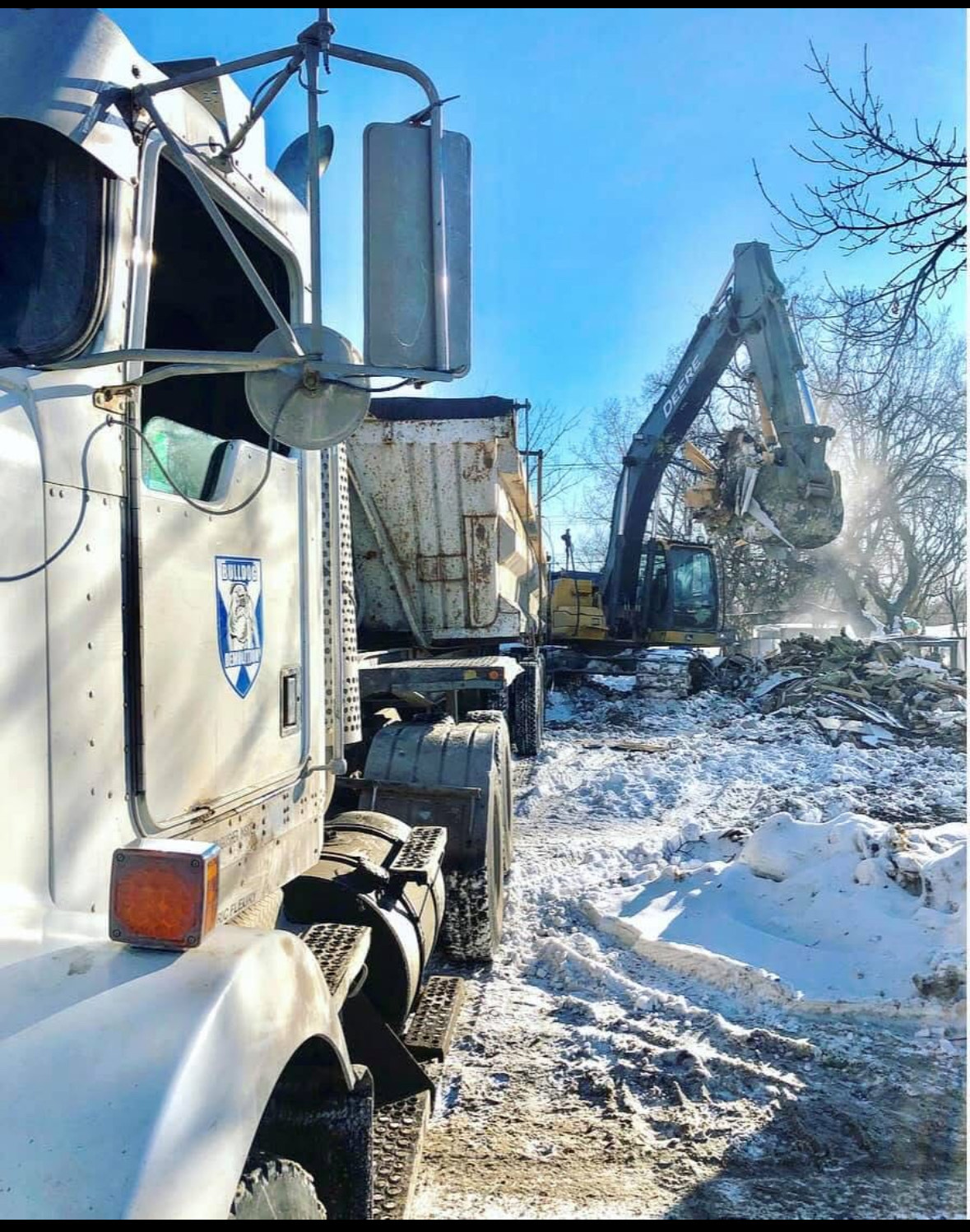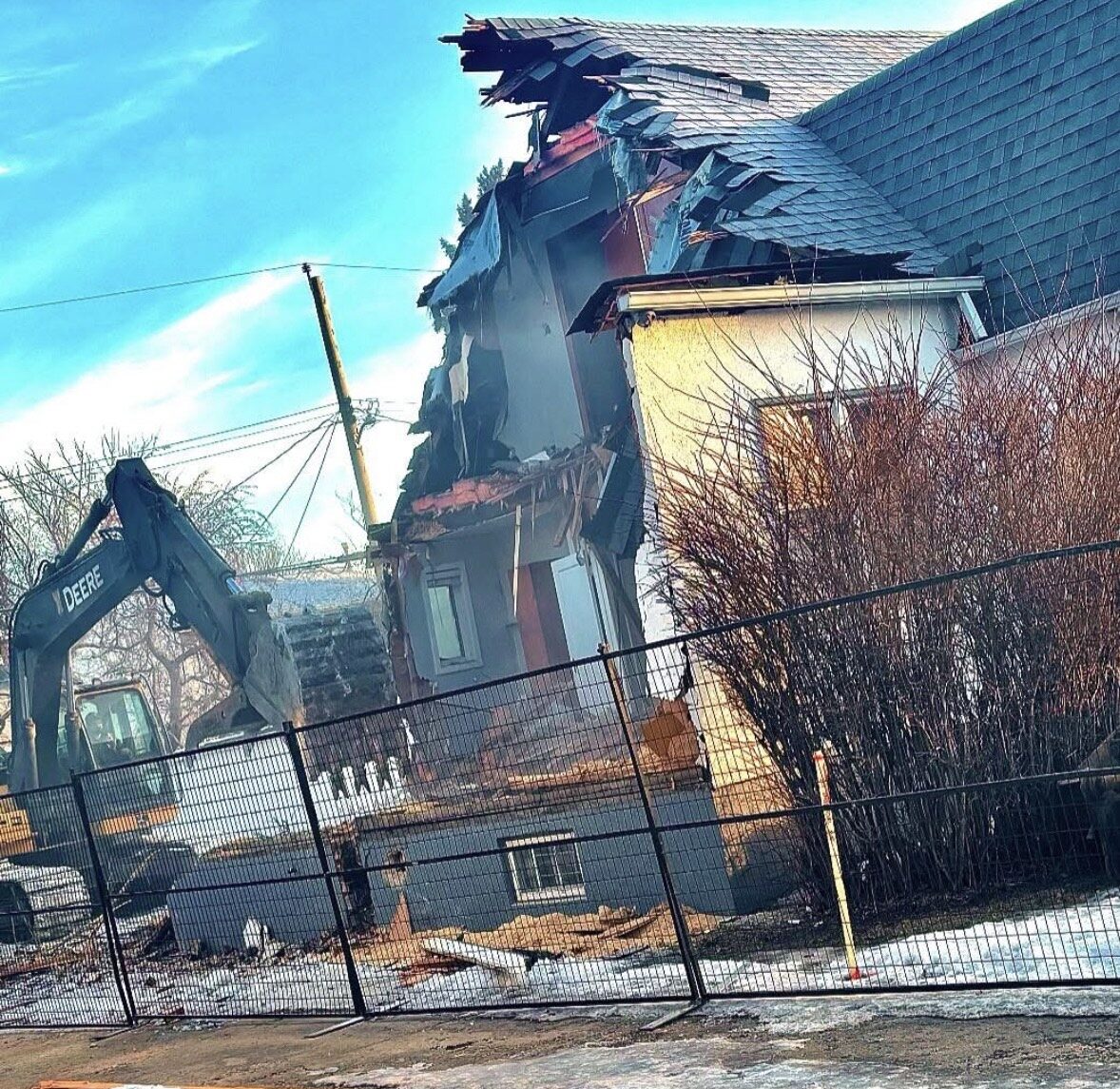 Request a Quote
Request a Quote

Whether you’re removing asbestos from your home or business, it’s important that you take the necessary safety precautions. Asbestos particles have been linked to major health concerns, so you need to take the hazards seriously. Many people want to know how long asbestos stays in the air after it has been removed so that they know when they can safely get back into their building.
Does asbestos stay in the air after removal, and for how long? Learn more about how to keep safe here:
After a professional demolition and asbestos removal company eliminates the material that had asbestos from your property, you need to give the dust time to settle. Mineral dust from these building materials can float along in the air for hours after the majority of the asbestos has been removed.
Plan to stay out of the building for a while; it’s best to give it 48 to 72 hours to settle safely.
Staying off the property makes it less likely that the dust will be disturbed, allowing it to settle on the surfaces. Keep in mind that any small disturbances can cause the particles to become airborne again.
From its settled state, it can be removed with vacuums and specialized equipment to eliminate any danger to your health. While this isn’t the answer that many people would like to hear, it’s safer to steer clear of the area until the demolition company gives you the green light to reenter the building they were working on.
One of the best things to do following asbestos removal is to conduct an air test. Professionals will come in with specialized technology to take air samples and study them under a microscope for any evidence that asbestos remains in the air at the property.
Testing can take a few days to yield results, but it’s well worth the wait to avoid the risk to your health that asbestos can cause if inhaled or ingested.
Because asbestos can become airborne with surprising ease, it’s crucial to ensure that none remains in the air before you move back into the building. After all, the smaller fibers are the ones most likely to become airborne again.
The fibers can be so tiny that you won’t be able to see, taste, or smell them, which is quite scary. You would never know how much is airborne until you conduct one of these air quality tests.
If you have asbestos, it needs to be handled with care, so you’ll require top-notch demolition and asbestos removal in Winnipeg. Bulldog Demolition & Asbestos Removal can help you get the services you need so that you can be assured that your property is safe and healthy. If you need some assistance with your current project, give us a call today to learn more about how we can help you!
If you stumble upon asbestos in your home or business, you know that this dangerous material needs to be removed as quickly and efficiently as possible. The question is: How long does it really take to get rid of this harmful building material? The good news is that it may not take as long as you expect, though it can be quite inconvenient if you have to vacate the building.
Here’s what you need to know about how asbestos removal works:
For many projects, there’s an important stage that cannot be skipped when you want to keep everyone in the home or office as healthy as possible: Prep work. This can often take a full day by itself, depending on the location of the asbestos and the extent of the issue. If the removal only needs to take place in a part of the home or business, it’s important to section off this area to prevent asbestos particles from spreading to other parts of the building and working their way into your lungs where you return.
The good news is that you can often get back into your building relatively quickly. Most of the time, the removal is limited to a 48-hour period. The removal in a small area may take only one day, while a more involved project may require more time. If the problem is spread throughout the entire building or covers sizeable square footage, then you might require extra time to remove all asbestos thoroughly.
Once the asbestos is removed, it’s best to wait for all final testing to be completed before you resume living or working in the building. This is sent off to a third-party testing site to ensure that everything has been removed. Until this final testing comes back, all of the prep work that was done to contain the asbestos in a given area will remain intact. This will prevent any leftover asbestos from spreading if the test results come back as not clear.
Clear results mean that the job is officially finished. It may take extra hours for your asbestos removal company to tear down all of its containment systems. This wait time is well worth it to help you be assured that you’re safe from these harmful particles.
Keep in mind that asbestos removal is only a part of the process. You may need some work done on the property to restore things after the asbestos removal takes place. It may require removing some building materials that will need to be replaced with asbestos-free items. In most cases, you can easily live in the home/work in the building while this takes place. However, you may want to factor this time into how long it actually takes to remove asbestos.
Asbestos is a dangerous construction element that can cause serious harm, including deadly diseases like mesothelioma. You need to trust the removal of asbestos to the professionals who have the know-how and equipment to take care of the issue safely. For asbestos removal in Winnipeg, contact Bulldog Demolition & Asbestos Removal today!
If your understanding of asbestos is a little murky, you’re not alone. You probably have a sense that asbestos is bad. And dangerous. But do you actually know what it is, where it’s found, how to identify it, or how to deal with it? Let’s do a quick dive into the world of asbestos so you can get up to speed on these basics–and stay safe in the process!
What is asbestos?
Okay, without getting too technical, asbestos is a naturally occurring mineral that used to be mined all around the world. It is composed of flexible fibers that resist heat, electricity, and corrosion. For these reasons, asbestos became very popular in construction materials beginning around the 1940s. It was added to cloth, paper, plastic, drywall, and many other materials.
Cool, right?
Except that it turns out asbestos exposure is highly toxic. People who inhale asbestos fibers (which then become trapped in the body) are at risk for a host of incurable lung conditions as well as aggressive cancers like Mesothelioma and Ovarian Cancer.
OK…not so cool. So, how do you avoid this stuff?
The short answer is, that it’s not that easy to know. But, before you panic, let’s keep a few things in mind:
Firstly, while it is important to know if you have materials containing asbestos in your home or business, asbestos is not harmful as long as you aren’t inhaling it. Practically speaking, this means that as long as asbestos products remain in good condition and are undisturbed, there’s no cause for alarm.
Secondly, serious adverse effects caused by asbestos usually result from long-term exposure. This isn’t to say that asbestos is not a serious concern (because it is), but it can give you some peace of mind to know that dealing with it properly and in a timely manner should reduce severely harmful outcomes.
Asbestos products were used heavily in Canadian construction between the 1940s and 1980s. Common asbestos-containing materials include insulation, ceiling tiles, roofing materials, plaster, and more. Safe Work Manitoba recommends that it’s best to test for asbestos if your home was built before 1990. This holds particularly true if construction materials in your home are being disturbed for any reason–like home renovations or any sort of unexpected damage.
Identifying and removing asbestos is not a DIY project. If you suspect the presence of asbestos in your home, it’s very important to get an expert on-site and have it dealt with safely and properly. Asbestos solutions can include removal but might also involve sealing or containing asbestos, depending on the situation.
Bulldog Demolition & Asbestos Removal provides professional asbestos removal services. Whether it’s part of preparing a site for demolition or simply helping you ensure your home or business is safe, we’re committed to providing safe and excellent asbestos removal in Winnipeg. Call us today for more information.

Homes are meant to provide safety and comfort throughout your day-to-day life. It can be scary to imagine that there might be dangerous materials lurking about your living space. Asbestos was a common material used in the construction of houses and buildings for many decades. It’s often discovered in homes during renovations, demolitions, or any form of deconstructing. We’ll be covering the places where asbestos can be found in your home and how it can impact your health:
The name “asbestos” originated from the Greek meaning “inextinguishable.” Asbestos was a real wonder when discovered - it was an inexpensive material that was fire-retardant and acted as a thermal and acoustic insulator. It was commonly used before the 1980s throughout the construction industry. Homes that were built within the last 40 years are less likely to contain asbestos materials, but that doesn’t mean that it’s been eradicated from the world. Today, people still have many run-ins with asbestos.
There are several locations in your home that could contain asbestos; it was used in a plethora of household materials, such as:
From insulation and interior surfaces to heating and piping, asbestos is far-reaching in older buildings.
Due to many decades of documentation, there is factual evidence about what asbestos can do to your health. Asbestos fibers are easily inhaled into the lungs causing health risks such as:
You’re more likely to experience the health risks of asbestos if exposed to higher concentrations or for prolonged periods.
Asbestos exposure can occur when it is disturbed by the following:
Exposure can occur anywhere in the home, but the most common spaces include:
If you’re concerned about possible asbestos-based materials in your home, you should periodically check for any tears, abrasions, or water damage. If you find damage, don’t touch or disturb the area, as you don’t want to become exposed to the fibers.
You may want to have your home inspected by an industrial hygiene firm. They’ll be able to safely and properly check your home for asbestos. Some professional repair or removal may then be necessary to ensure your safety.
The safety and health of your home are paramount, and you shouldn’t have to face the threat of asbestos in your home by yourself. Get only the best quality asbestos removal in Winnipeg today and watch them restore your home back to normal.

Many homeowners dread finding out that they have asbestos lurking in their homes, especially if the construction material has already been disturbed. Asbestos is known to lead to some serious health challenges including lung cancer. Removing it safely from your home is not something you can do as a DIY home project. It should be left to the care of professionals who can manage and discard the materials properly.
The question many homeowners face is: where are you likely to find asbestos in the home? It was a very common building material in Canadian homes and businesses. Know what you could be walking into and where asbestos might be found:
Insulation is one of the most common and prevalent areas where you might encounter an unhealthy dose of asbestos. In most situations, it is found in attic or wall insulation that contains vermiculite. Because it is safely hidden behind sheetrock and will not be disturbed, the asbestos found here may not pose a problem for your health.
Other types of insulation that may contain asbestos include oil and coal furnaces or door gaskets with insulation. Insulation covering hot water or steam pipes can also be affected by asbestos.
It will become an issue if you need to repair your walls, replace some sheetrock, or enhance the insulation in your home. Once this insulation is disturbed, it can release those tiny particles into the air and allow them to infiltrate your lungs. They can even be carried on your clothes to other parts of the home and to the rest of your family members.
If you suspect that your insulation contains asbestos, it is best to have it looked at and tested by a professional before disturbing it.
One of the leading places homeowners find asbestos is actually on the outside, on their roofing shingles. Fortunately, roofing shingles are on the outside of your home so you won’t need to take as many precautions while waiting for the asbestos to be removed.
However, this does not mean that you should attempt to do it on your own. It will require a professional who has the safety equipment to remove and properly discard it. Keep in mind that asbestos can cling to clothes and could be carried to others who are not part of the demolition process. This is why it is best left to a company like Bulldog Demolition & Asbestos Removal.
Siding is another common area where asbestos was frequently used. Much like with roofing, it is worth having it tested if your home was built before 1980. Remember that professional removal of this siding is going to be necessary to keep everyone in your home safe from exposure to this dangerous construction material.
Vinyl floor tiles and the backing on sheet vinyl flooring could be another area where asbestos is hiding. It is impossible to tell simply by looking at your flooring whether it will contain this harmful particle. The only way to know for sure is to ask a professional or to send it off for testing.
It is a good rule of thumb that if your vinyl flooring has been down since 1980 or before, the tiles or the backing on sheet vinyl will likely contain asbestos. While this is not a hard and fast rule, it can be a helpful guide to let you know whether you should worry about this construction material found in the home.
Does your home have decorative paint that lends a nice texture to the walls? If it has been on the walls for a while, you might run into asbestos here as well. One of the main areas where this material lurks is in textured ceilings, particularly of the popcorn variety, though other popular textures might have made use of asbestos as well.
If your home is older than 1980 and has had this layer of paint or patching compound up for quite some time, then it may be a good idea to get it tested by a local lab before you proceed to remove it. A home that was painted before the 1970s could have as much as 10 percent asbestos in it, so be sure to have it tested.
When the paint or patching compound begins to chip, it might be a sign that you need to rid your home of these asbestos particles sooner rather than later. The entire surface that they are painted on may need to be removed.
Do you have a wood-burning stove in your house? These relics of the past can be great for cozy winter nights, but they may be an indicator that you have asbestos in your home. The walls and floors around these fixtures were often outfitted with asbestos paper, millboard, or cement sheets to withstand the heat coming off the stove. Be sure to have the areas around a wood stove tested before making any major modifications to the home.
If you think that you might be dealing with asbestos, it is time to contact Bulldog Demolition & Asbestos Removal for asbestos removal in Winnipeg. We can help you test, remove, and safely discard your asbestos-related materials to give you greater peace of mind. Learn more about the services we offer today!

Asbestos is a dangerous building material that was used primarily in older homes built between 1900 and 1980. Many homeowners worry that they might be unknowingly exposed to asbestos when they decide to tackle a home project. Bulldog Demolition & Asbestos Removal is an experienced contractor who can help you to handle these situations.
Learn more about asbestos and how to deal with it in your home here.
Many homeowners are looking for an easy answer when it comes to identifying which building materials contain this harmful ingredient. Unfortunately, there usually is no way to tell if your materials contain asbestos simply by looking at them. In rare instances, you might find materials that are marked as containing asbestos, but this is the only way you would be able to tell simply by sight.
Instead, you should always treat the situation with care if you suspect that your building material may contain asbestos. Call in a professional who can take a sample of your material and send it off to a local lab for testing. This is the only surefire way to prove that your building materials do or do not contain asbestos.
If it turns out that your home contains asbestos, the best thing to do is leave it alone and limit your exposure to the area. There are no safe levels of exposure to this harmful ingredient. You will need to call in professionals who have the equipment and experience to remove the material from the home and discard it properly.
Keep in mind that airborne asbestos is not the only way that you can suffer serious health consequences from exposure. It also clings to your clothes and can be carried to other parts of the home or to more vulnerable family members. Asbestos removal in Winnipeg is not a weekend DIY project that you should attempt to tackle on your own due to the serious health consequences that could result from exposure.
The process to remove asbestos from the house is not a simple one. You and your pets will need to find other living arrangements while a professional asbestos abatement company comes in to remove the material. The affected areas of the home will be sectioned off with plastic. They will also seal your vents and ducts to prevent the airborne materials from spreading to the rest of the home.
A professional crew will also do a thorough job cleaning up before they leave. All the rooms that were affected by the asbestos should be cleaned with a HEPA vacuum to eliminate lingering particles. If an item was used in the removal of the asbestos, it should be removed from the home along with the waste products.
Before you move back in, you may want to hire a consultant to assess the air quality of your home to ensure that no asbestos is lingering. Wait for the all-clear before you head back into the home.
When should you be concerned about a building material containing this harmful ingredient? One way to determine whether it is likely that your paint, insulation, shingles, or other materials contain asbestos is to look out for some of these risk factors. Take a look and see if your home meets any of the criteria:
An older home is significantly more likely to contain asbestos than a new home that was built in the past decade or so. If your home was built before 1980, it is safe to assume that asbestos is in some part of the home. Before you tackle any major home renovation projects, be sure to have the material tested before disturbing it.
Another key risk factor for asbestos is dimpled building materials. Keep an eye out for shingles and other roofing material as well as insulation that causes dimpling. If you notice any of these signs, it is best to put your project on hold until you can get the results of your lab testing back.
If you suspect that you may have asbestos in your home, be sure to contact a professional asbestos abatement company like Bulldog Demolition & Asbestos Removal. We have the equipment and experience necessary to safely remove this material from your home. Give us a call today to see how we can help you!
If your home or building was built before 1990, it may contain asbestos. When asbestos is undisturbed, it does not pose health risks. When it is moved, however, it can release small fibres into the air. When these fibres enter a person’s lungs, they can cause serious health problems, including lung cancer and mesothelioma.
To understand why asbestos was used so commonly, and what its potential health consequences are, we recommend reading the Canadian Centre for Occupational Health and Safety’s page on asbestos.
Before a home or building is demolished, it must be checked for asbestos, and any asbestos that is found must be removed. This article will help you understand what is involved in asbestos removal, and what your responsibilities are as a property owner, contractor, or employer engaged in demolition.
In Manitoba, your first responsibility is to inspect the property for asbestos if you suspect there may be asbestos. In Canada, many buildings built prior to 1990 contain asbestos. This means that if your building is older than that, there’s reason to suspect asbestos in at least some parts of the building, be it the insulation or the popcorn ceiling.
You can talk to your demolition contractor if you’re unsure, but an abundance of precaution is necessary when it comes to asbestos, and almost every building built prior to 1990 should be inspected.
The rules in Manitoba are pretty straightforward: any product suspected to contain asbestos must be tested for asbestos. Products are tested in a laboratory. If products and materials are not tested for asbestos but are suspected of containing asbestos, they must be treated as though they do contain asbestos and removed accordingly.
Asbestos removal must be handled by well-trained professionals who are skilled at mitigating the risks of asbestos. These professionals will use equipment and techniques that prevent the release of asbestos fibres. It’s important to understand that this isn’t just advice we’re giving you - this is in the asbestos removal requirements laid out by the Government of Manitoba.
You need professionals who are specifically trained in asbestos removal.
If your renovation involves any demolition, and there are materials suspected of containing asbestos in your building, you’ll need to have those materials checked for asbestos - and, if they do contain asbestos, you’ll need to have them removed by a professional.
This means that if you’re engaged in major bathroom or kitchen renovations, and your building was built prior to 1990, you’ll probably need someone to check for asbestos.
The list of building materials and products that can contain asbestos is staggering. Insulation, roof felt and shingles, fuse boxes, stucco (popcorn ceilings), outlets, flooring, and more can contain asbestos. Don’t assume there’s no asbestos just because you don’t have blown-in insulation!
Looking for a contractor who offers demolition services, asbestos testing, and asbestos removal in Winnipeg? Call Bulldog Demolition & Asbestos Removal to request a quote from our experts.